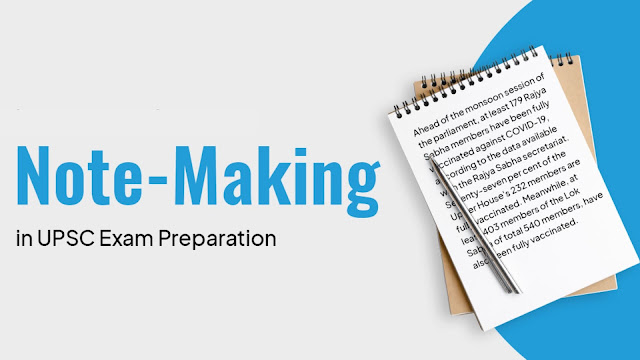When creating NCERTs notes for the UPSC, the majority of students feel lost. We appreciate the gravity of the situation and are therefore here to assist! In this article, the CL-Gurus will instruct UPSC aspirants on how to take NCERT notes for the exam! We've also compiled NCERT notes, which you can directly download for review!
Why should you prepare NCERT notes for the UPSC?
As you are aware, the UPSC's Prelims and Mains curricula are extremely comprehensive. To effectively study and review them, you must have concise and clear UPSC notes for revision.
Second, reading almost all of the NCERTs from grades six through twelve is a daunting task! Students waste a great deal of time because they do not realise that they do not need to read the entire book; they only need to adhere to the syllabus. Therefore, taking notes on relevant NCERT content is crucial for saving time, particularly when reviewing.
How to Create Notes for the UPSC
Reading the syllabus is the first step in creating notes for an exam. Your notes should strictly adhere to the course outline. Consequently, as a prerequisite to note-taking, it is essential to read the course outline and previous year's exam papers. Now, regarding NCERT note-taking, here is a seven-step process that should be of great assistance. Let's begin!
#1 Read The Classics
While preparing UPSC Notes, the first step is to read the books without underlining or writing anything down. Otherwise, you will rewrite everything, as you may discover that everything is essential. Therefore, give it a cursory reading and attempt to comprehend the key points. Having read the course outline and previous year's examinations, you would understand what is crucial. Therefore, during the second reading, record only that portion!
#2 Make Bullet Points
#3 Compose Brief Sentences
Next, when preparing UPSC Notes for NCERTs, you should focus on writing concise sentences. Do not write lengthy sentences because they are difficult to read. Make notes in your native tongue. It is not necessary to rewrite each and every sentence in the book. Rephrase them so that they are brief so that your notes are concise and clear.
Note:- If you are preparing for UPSC exams or any other govt. exams or banking exams, I highly recommend that you visit Gk question answers, which has been used by millions of aspirants in the past because they provide daily updated & relevant current affairs and Gk quizzes. So check it out!
#4 Go Digital Whenever You Can
Digital is the modern method for everything! Utilize apps such as Evernote to take notes for the UPSC. It will save you a great deal of writing time! It also makes editing and updating notes very simple. You will also not have to worry about physically rescuing them.
#5 Use Loose Sheets Against Registers For Preparing UPSC Notes
Make subject-specific The United States Patent and Trademark Office (USPTO) documents registers on loose sheets and stores them in multiple folders. This will facilitate information storage. Registers are cumbersome and frequently misplaced. Additionally, it is difficult to store an excessive number of registers against the loose sheets. Notes prepared on loose sheets are more manageable and readable.
#6 Make Flow Charts For UPSC Notes
Flowcharts can be used to replace the textual information. Prepare flowcharts whenever possible, as they are easier to read and remember than lengthy sentences. Whenever there is a sequence of events, especially in history, flow charts make it easier to retain information. Therefore, organise your UPSC Notes as flowcharts.
#7 Keep Revising Your UPSC Notes for NCERTs
There are two reasons for regularly reviewing your UPSC Notes. The first is to remember the information, while the second is to remember what you have written. Most students forget the abbreviations they used or the incomplete sentences they wrote if they read their notes after a lengthy absence! Therefore, to keep them fresh in your memory, continually review your notes. In addition, continue to update it with current events and new information.
This is a brief summary of how to create NCERT notes for the UPSC. We sincerely hope that this will assist you in creating your own NCERT notes for UPSC. If you are severely pressed for time, you can also download our NCERT compilations for more efficient review!



0 Comments